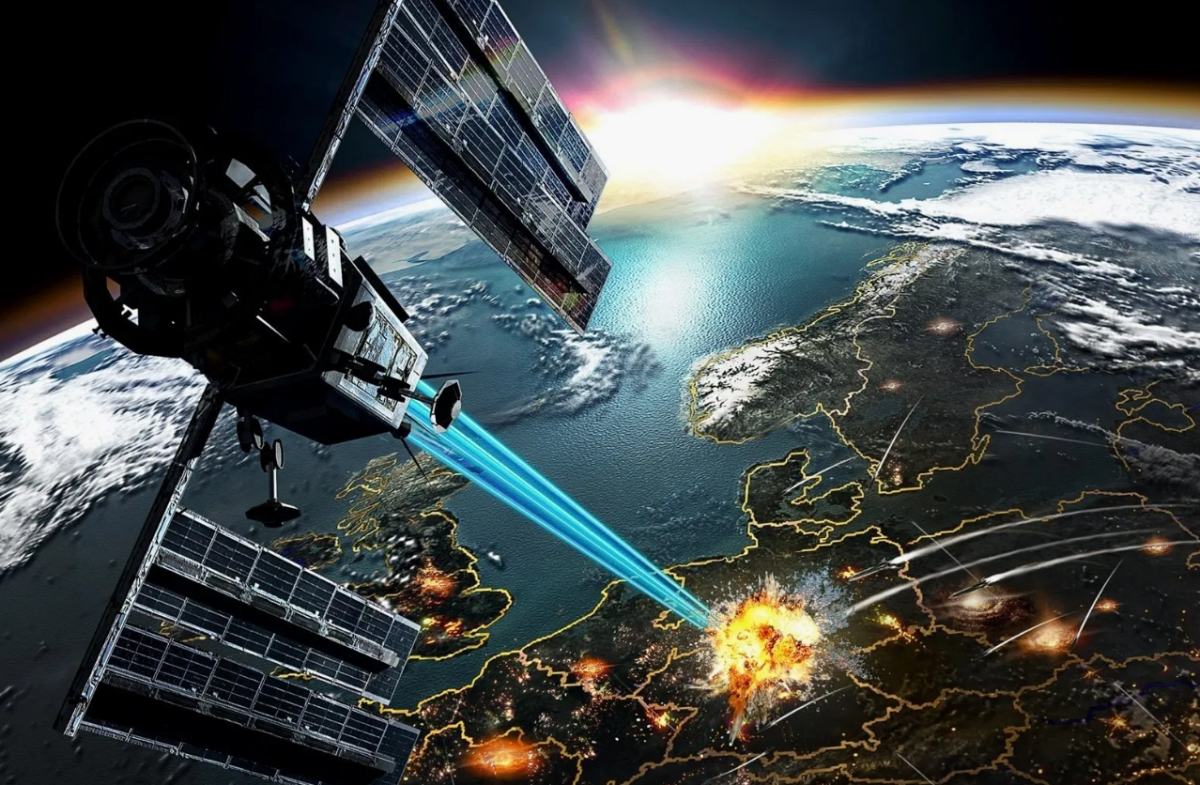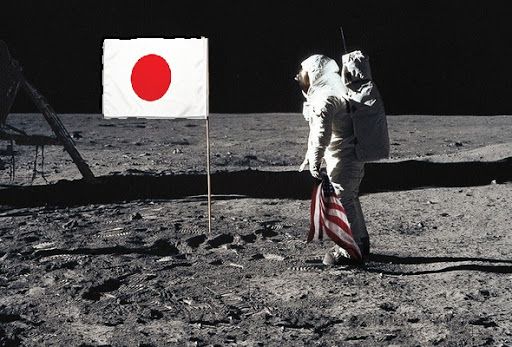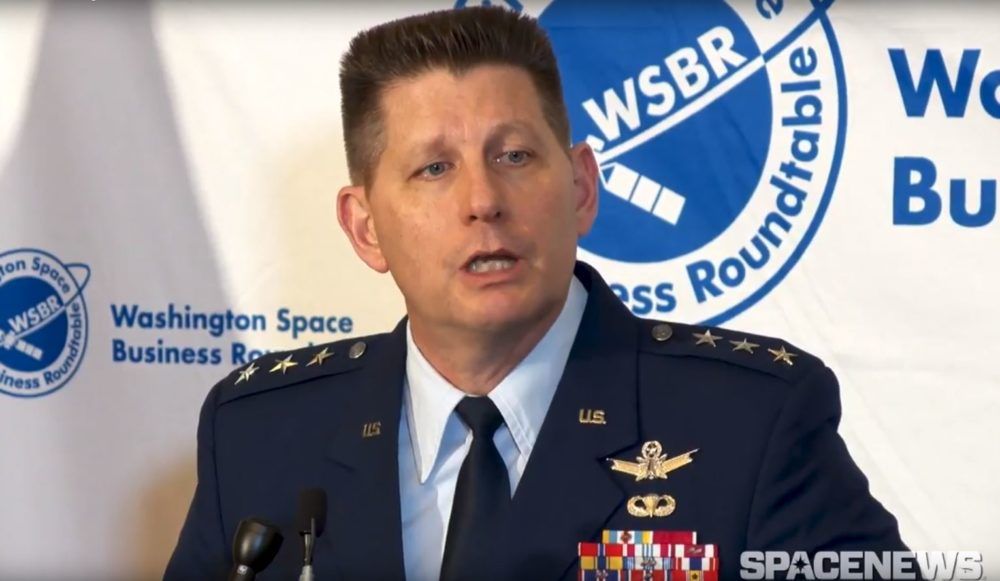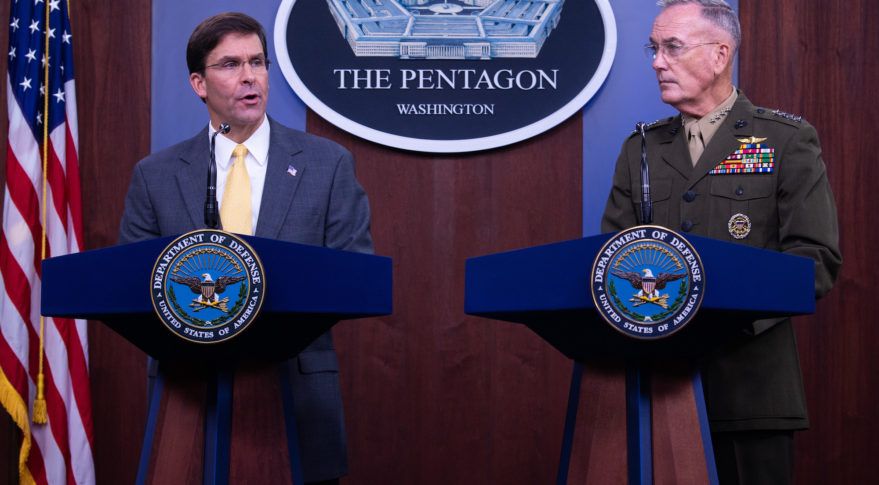Military Leaders Provide Insight Into the Re-Established US Space Command
Article by Amanda Miller May 8, 2021 (airforcemag.com)
• On May 7th, several of the newest top officials in the U.S. Space Command appeared during a Space Foundation virtual ‘Symposium365’ talk. The members of Space Command, which was re-established 19 months ago and whose geographic area of responsibility starts 100 kilometers above the surface of the Earth, intentionally come from diverse backgrounds. Only a few come from Space Force – so far.
• Army General James H. Dickinson leads U.S. Space Command from its provisional headquarters at Peterson Air Force Base, Colorado, although the Department of the Air Force may ultimately choose to select Redstone Arsenal, Alabama as U.S. Space Command’s permanent home. Either way, more partner organizations will be “coming to work” over the next 12 to 18 months. “[O]ne of our strongest deterrence capabilities…within the command is that strong allied and partner integration that we have,” said Dickinson, whose background is in missile defense. “So our ability to be able to capture that energy and start bringing those folks into the command itself is very powerful.”
• One way the U.S. Space Command tries to expand the pool of international partners is by inviting countries to take part in the space situational awareness exercise under ‘Global Sentinel’. Ten partners including the U.S. took part in the last Global Sentinel in 2019. Invitations to participate in Global Sentinel serve “as a lead-in to signing space situational awareness agreements with these partner nations,” says Space Force Colonel Devin R. Pepper, deputy director of U.S. Space Command’s Strategy, Plans, and Policy Directorate and garrison commander of soon-to-be Buckley Space Force Base in Colorado. Chile and Poland are the newest partner nation prospects.
• Air Force Maj. Gen. William G. Holt II spent his career as a special operations pilot before becoming U.S. Space Command’s director of operations, training, and force development. He characterized the command’s makeup as an even mix of Air Force, Army and Navy backgrounds, with a “handful of Marines”. Holt credited Space Force Chief of Space of Operations Gen. John W. “Jay” Raymond with the level of ‘jointness’ intended “to change the dynamic and really bring in a warfighting … viewpoint from across the force. “[H]aving the different backgrounds as far as the different services, I think, was really critical to [Raymond] bringing me in.”
• The Space Command is looking ahead to when the military will want to operate beyond Earth orbit. “More and more nations are operating in space,” said the U.S. Space Command’s senior enlisted leader, Marine Corps Master Gunnery Sgt. Scott H. Stalker. He cited the United Arab Emirates’ Hope Mars Mission satellite orbiting the red planet as “the first planetary science mission led by an Arab Islamic country.” Stalker, formerly with the DIA and U.S. Cyber Command, acknowledged that, “We are no longer the undisputed leaders in space.”
• U.S. Space Command’s Deputy Director of Intelligence Sean M. Kirkpatrick said, “We’ve got a huge Moon competition going on. We’ve got a Mars competition going on… We are going to have to extend our mission space to the cislunar, lunar, and Martian orbits and regimes at some point in the not-too-distant future.” To gather intelligence in deep space, the US needs to take advantage of space technology that the commercial sector will provide. “The customary five to ten-year time frame for a defense acquisition program would take too long.”
• Army Brig. Gen. Thomas L. James served in Operation Desert Storm in the 1990s when GPS was brand new and unreliable. “The way they operated then— because it was only a partial (communications satellite) constellation — is some of the time, you knew where you were with great precision. Some of the time, you knew that you didn’t know where you were at all based off of the GPS. And some of the time, you thought you might know where you are.” Today, General James is “passionate” about having space itself as a resource.

Special-ops aviators, a physicist from the intelligence community, and an enlisted Marine with decades of deployments: U.S. Space Command’s military and civilian leaders who spoke May 7 were as likely to come from strictly space backgrounds as not.
Marine with decades of deployments: U.S. Space Command’s military and civilian leaders who spoke May 7 were as likely to come from strictly space backgrounds as not.
Several of the newest combatant command’s top officials appeared during a Space Foundation virtual Symposium365 talk. They indicated that their diverse backgrounds are by design and that few Space Force personnel are yet a part.

Some of the day’s insights from inside the command, which was re-established 19 months ago and whose geographic area of responsibility starts 100 kilometers above the surface of the Earth:
More Partners, More Deterrence

Army Gen. James H. Dickinson leads U.S. Space Command from its provisional headquarters at Peterson Air Force Base, Colorado. He said more allied and partner organizations will be “physically coming to work” at Peterson over the next 12 to 18 months and he sees “that energy expanding.”
“When I look at deterrence, one of our strongest deterrence capabilities, or measures, within the command is that strong allied and partner integration that we have,” said Dickinson, whose background is in missile defense. “We are starting to see a lot more allies that want to be … part of the space enterprise, want to work with U.S. Space Command,” he said. “So our ability to be able to capture that energy and start bringing those folks into the command itself is very powerful.”

The Department of the Air Force selected Redstone Arsenal, Alabama, as U.S. Space Command’s permanent home pending an environmental review, though the selection is under review.
One way U.S. Space Command tries to expand the pool of international partners is

by inviting countries to take part in the Global Sentinel exercise in space situational awareness started by U.S. Strategic Command, said Space Force Col. Devin R. Pepper, deputy director of U.S. Space Command’s Strategy, Plans, and Policy Directorate and garrison commander of “soon-to-be Buckley Space Force Base” in Colorado. Pepper was nominated to be a brigadier general in January.
Ten partners including the U.S. took part in the last Global Sentinel in 2019. Pepper mentioned Chile and Poland as prospects. He said the invitations serve “as a lead-in to

signing space situational awareness agreements with these partner nations.”
Warfighting Dynamic
Air Force Maj. Gen. William G. Holt II said he “didn’t have much experience with the space domain” before becoming U.S. Space Command’s director of operations, training, and force

development.
A career special operations pilot, he characterized the command’s makeup as “actually very joint” and “kind of an even mix of Air Force background, Army background, Navy background—we have a handful of Marines, including our director of our cyber operations is a Marine one-star—and then, actually, not a whole lot of Space Force officers at this point in time,” Holt said.
Holt credited Space Force Chief of Space of Operations Gen. John W. “Jay” Raymond with the level of jointness intended “to change the dynamic and really bring in a warfighting … viewpoint from across the force.
“I’m not saying that the old Air Force Space Command wasn’t warfighters, because they absolutely did that every day—they supported us; they deployed downrange—but having the different backgrounds as far as the different services, I think, was really critical to [Raymond] bringing me in.”
FAIR USE NOTICE: This page contains copyrighted material the use of which has not been specifically authorized by the copyright owner. ExoNews.org distributes this material for the purpose of news reporting, educational research, comment and criticism, constituting Fair Use under 17 U.S.C § 107. Please contact the Editor at ExoNews with any copyright issue.
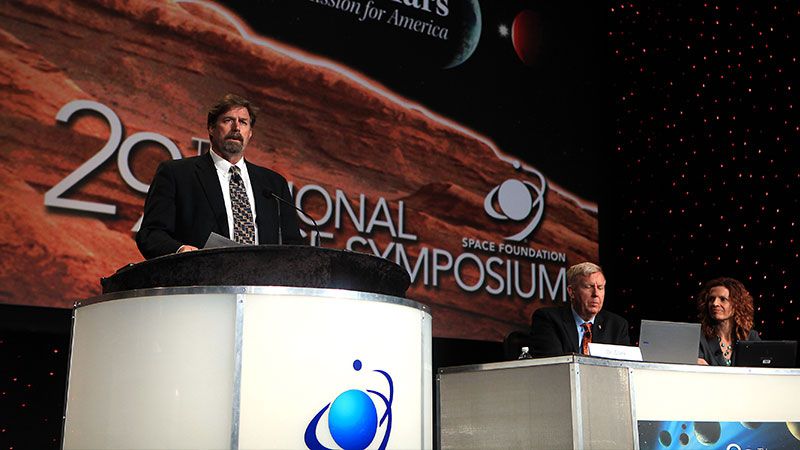
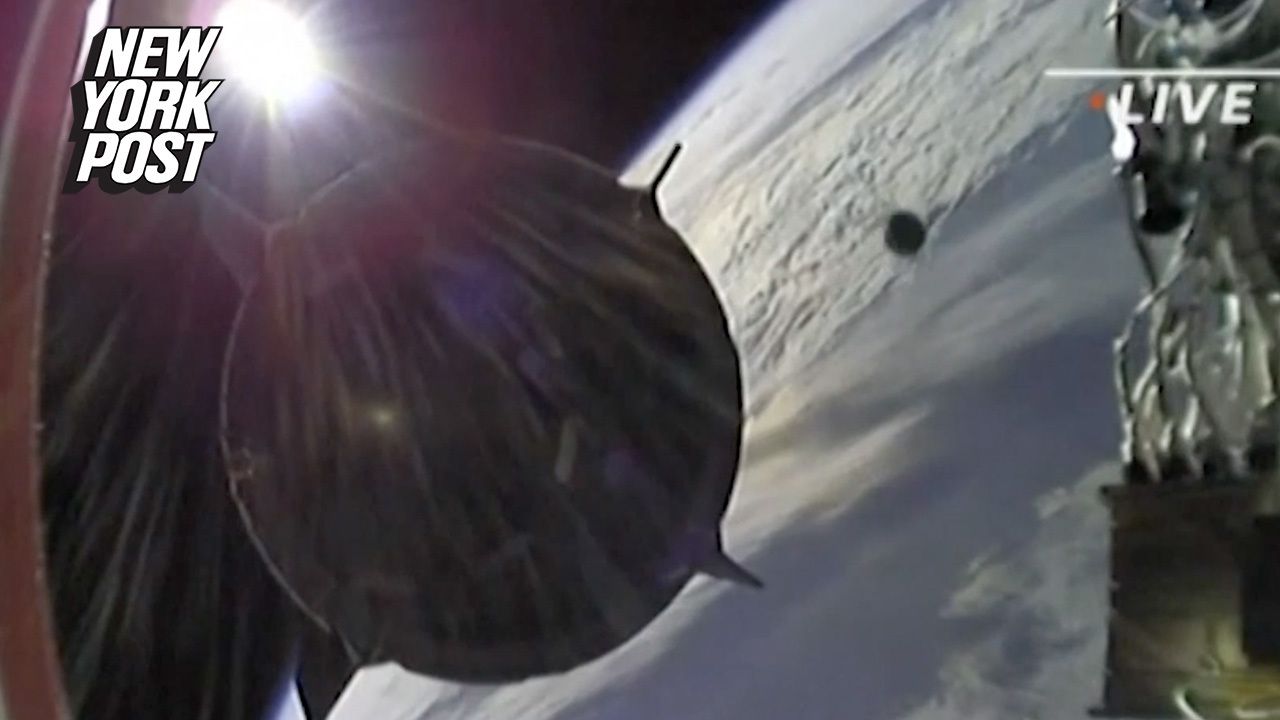



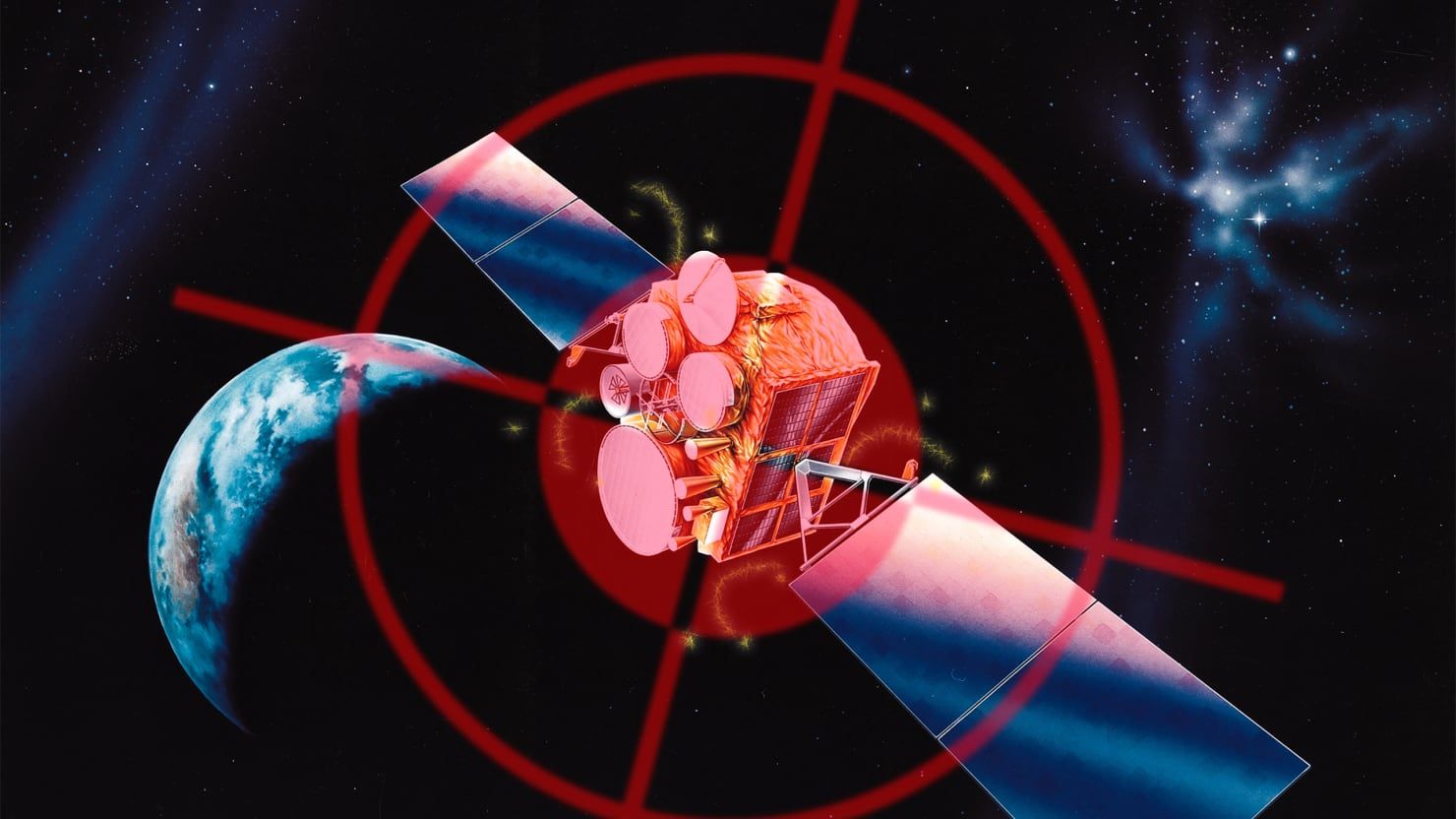


 To protect its vital space-based military capabilities—including communications,
To protect its vital space-based military capabilities—including communications, intelligence, and missile defense satellites—and effectively deter authoritarian aggression, Washington should avoid being drawn into suspect international treaties on space that China and Russia have no intention of honoring.
intelligence, and missile defense satellites—and effectively deter authoritarian aggression, Washington should avoid being drawn into suspect international treaties on space that China and Russia have no intention of honoring. signatories commit “not to place any weapons in outer space.” It also says parties to the treaty may not “resort to the threat or use of force against outer space objects” or engage in activities “inconsistent” with the purpose of the treaty.
signatories commit “not to place any weapons in outer space.” It also says parties to the treaty may not “resort to the threat or use of force against outer space objects” or engage in activities “inconsistent” with the purpose of the treaty.
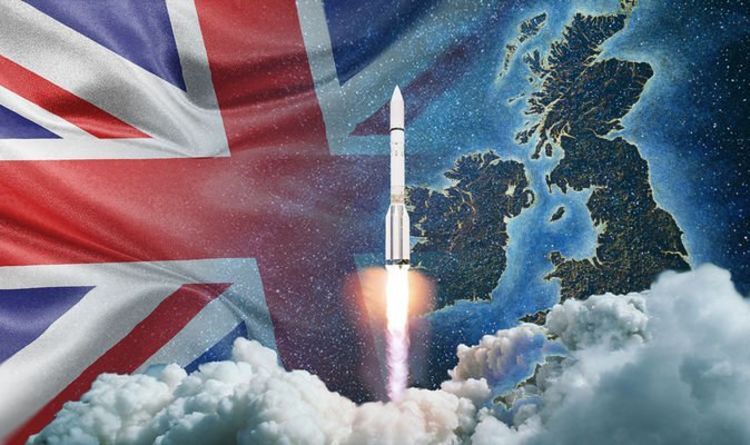
 Space battles are the stuff of science fiction, but recent technological and political
Space battles are the stuff of science fiction, but recent technological and political

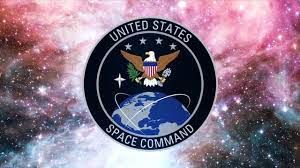
 Air Force officials have named First Air Force to serve as the future air component to
Air Force officials have named First Air Force to serve as the future air component to



 WASHINGTON — The United States and allies are drafting language in support of an international effort to adopt rules of behavior in space, U.S. Space Command’s Maj. Gen. DeAnna Burt told SpaceNews.
WASHINGTON — The United States and allies are drafting language in support of an international effort to adopt rules of behavior in space, U.S. Space Command’s Maj. Gen. DeAnna Burt told SpaceNews. concerns that the proliferation of satellites and debris is rapidly cluttering Earth orbit.
concerns that the proliferation of satellites and debris is rapidly cluttering Earth orbit.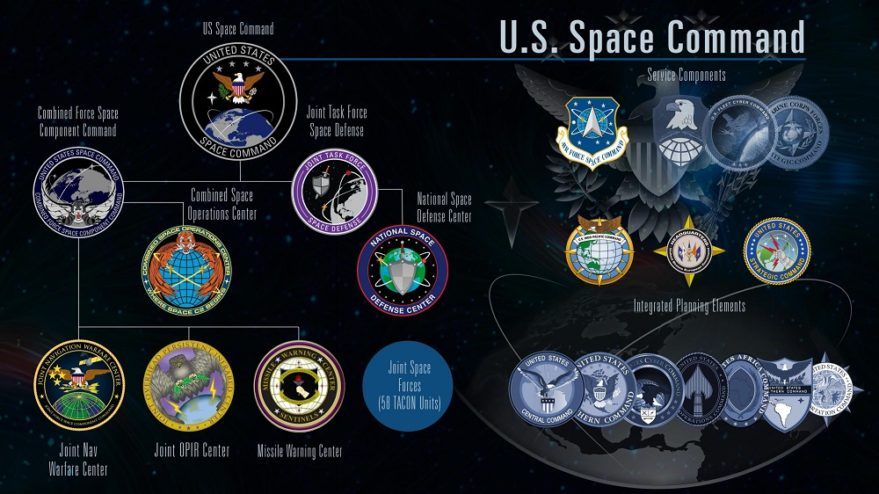

 posed by Russia and China, claiming the right of self-defense as America and its allies expand their space economies and look to permanently return to the moon.
posed by Russia and China, claiming the right of self-defense as America and its allies expand their space economies and look to permanently return to the moon.
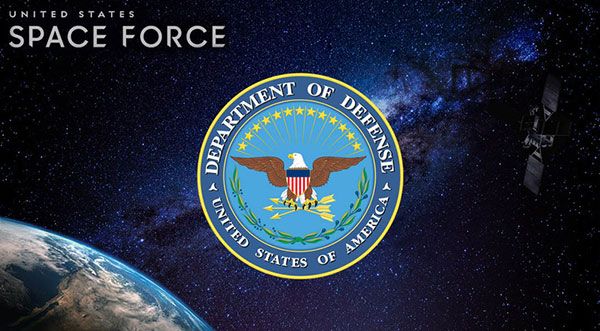
 In June, the Defense Department released its Space Strategy document. That document lays out the department’s four-pillar strategy for work that
In June, the Defense Department released its Space Strategy document. That document lays out the department’s four-pillar strategy for work that
